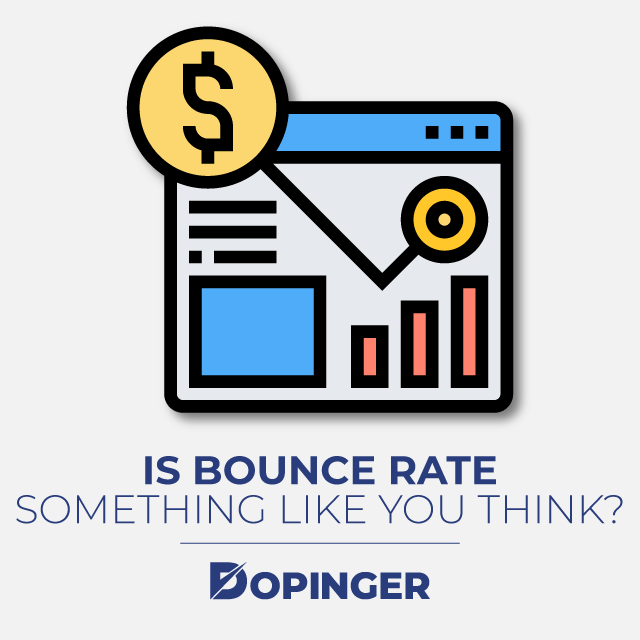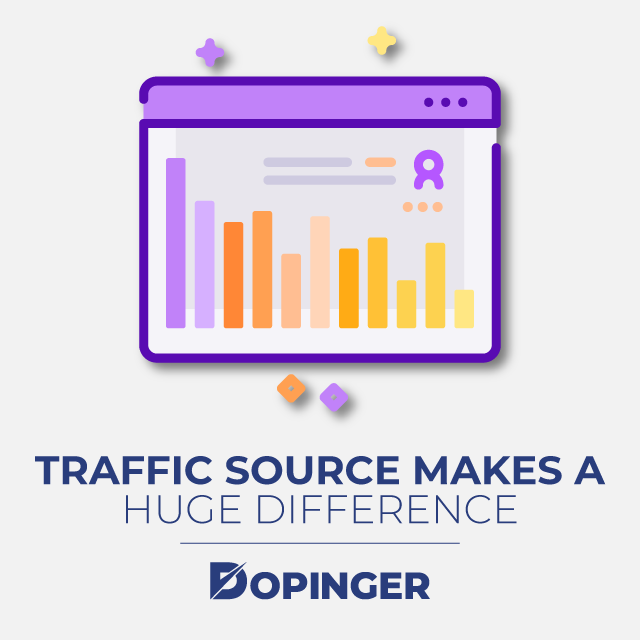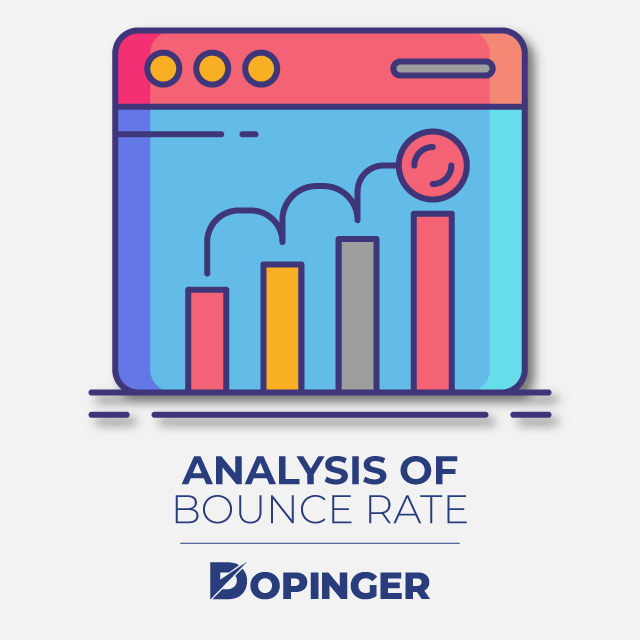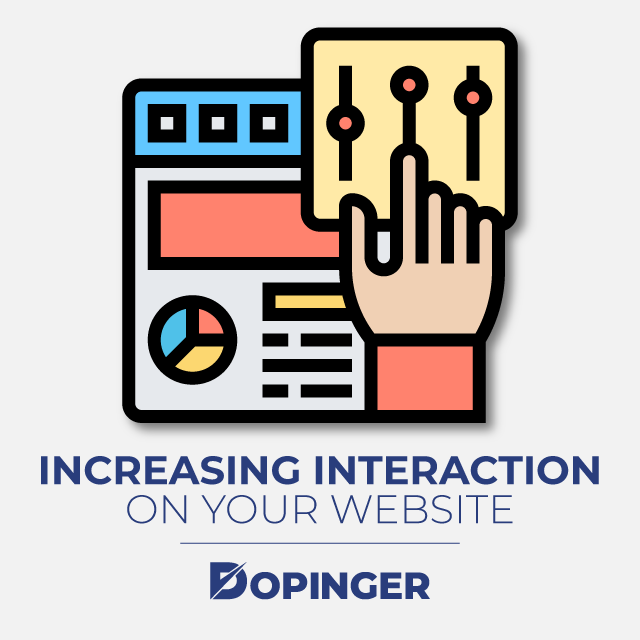Almost everyone involved in Digital Marketing emphasizes “how important it is to have a low bounce rate.”. However, Bounce Rate is one of the most misunderstood metrics for digital marketing. In this blog post, we both examined this concept through different scenarios and compiled the analyzes you need to do.
What Does Bounce Rate Mean, How Is It Calculated?
Bounce Rate is a metric that shows the percentage of visitors coming to your site to leave the site without visiting another page except for the landing page. This metric is crucial for websites; because it shows the problems you may not have noticed on some pages of your site and provides important clues about visitors’ behavior. The short and simple answer is: “A user logs into your website from any particular page via any traffic channel and leaves the page without any interaction, in this case, a bounce occurs.”
I wish it were that simple; let’s get a little deeper. There are three different ways to calculate the bounce rate:
- Page-level: In a given date range, the total number of bounces on a page is divided by the total number of entries on the page (the first-page impression hit).
- Site-level: In a given date range, the total number of immediate exits on the website is divided by the total number of entries on the site.
- Segmented: The total number of bounces on a specific date range for pages in a particular segment (for example, pages in the same category) is divided by the total number of entries for pages in the same segment.
Simply put, the user who leaves your home page and leaves without any further action creates a 100% bounce rate for that session. If the user goes to another page without logging out, the bounce rate for this session is 0%.

Is Bounce Rate Something Like You Think?
It’s not just visiting a second page that lowers the bounce rate. A user can create very low rates without visiting a second page. User actions can be defined with events (events) determined through Google Analytics. When users perform these activities, it will be low even if they have not visited a second page. For example, if there is a video you have placed on a page and set video playback as an event, Google Analytics will treat it as an interaction. It can generate a 0% bounce rate without the user entering another page. To truly achieve this rate, you must have made the necessary adjustments to events and interactions on Google Analytics.
“The bounce rate of site A is 43%, the bounce rate of site B is 57%, so site A performs better.” Discourse may not always be correct; there may not be enough Google Analytics activity has been set on site B. It may be possible to say that site B performs better when the adjustments are made. Besides, the design and functionality can directly affect the bounce rates of the site. Google comments on this: “If you have a single-page site like a blog or offer other types of content where single-page sessions are considered normal, it’s very normal to have a high bounce rate.”

Traffic Source Makes a Huge Difference
The bounce rate should be evaluated differently depending on the source of the traffic. For example, organic traffic is likely to produce a low bounce rate; Traffic coming via social media platforms or received with display advertising can create a high bounce rate. Therefore, when calculating, you should consider both on-page and traffic basis. For example, social media and display sources can increase
- The users following the Social Media flow does not pay special attention to what is brought to them; they do not elaborate on what is already visible in the stream.
- Users who already see banner or frame ads do not pay more attention to the content that is actively featured.
On the other hand, we can handle organic traffic and text ads, the examples above do not apply to these two sources, because the target of users will not be short news or visual communication.

Bounce Rate Is Not Always a Bad Thing
As we have just quoted from Google, having high bounce rates does not necessarily mean poor performance. We can give different examples to open this situation further; For instance, you wanted to see what movies were playing in theaters this week, and you logged into a movie theater website. You have gone through three or four different pages to learn about the movie you are going to watch and other movies. Everything seems reasonable until now. Now, if we say that the website is very useless and the content is prepared sloppily? If we said that you had to view five different pages to reach the movie and session information you were looking for, even though you had a bad experience, how would it sound to you?
The bounce rate of your visit on the site would be 0%, but the user experience would be crawled in places. For this reason, you would be less likely to buy online movie tickets. In this example, we have seen that the low bounce rate is not very good.
Because if you had entered another site that could offer the same content with only one page of navigation, you would be able to choose which movie you would like to watch in a short time, you would go without visiting other pages and get your movie ticket. The bounce rate would be quite high on this site, but the user experience and conversion rate would be higher. When

Analysis of Bounce Rate
If you see the bounce rate of 60% and above when you look at your Google Analytics account. Either something is going wrong, or there are other things you target. However, if you cannot keep the odds as you expected, you may be doing something wrong. In this respect, let’s talk about some areas you need to analyze.
- Date Range: Check out the bounce rates for specific dates based on your pages and site overall with Google Analytics. Are there any changes in content or design, advertising, or social media campaigns during the high rates?
- Sector Comparison: Make a sectoral comparison in the “Audience -> Comparison -> Channels” section of Google Analytics. For example, a website’s bounce rate in organic traffic can be 85.04%, while the industry average was 60.06%. In other words, the website is far from the average of the sites in the industry. It can be behind the sector not only in organic traffic but also in other channels.
- Channel Comparison: You can also test user behavior using the “Comparison” chart in “Acquisition -> All Traffic -> Channels” again in Google Analytics. When we look at the statistics, we can see whether the channel traffic is above or below average.
- Comparison by Page: This time, you can go to the “Behavior -> Site Content -> Landing Pages” section and make a ratio analysis on a page basis. In this section, we recommend you to filter the pages that have received traffic above a certain number. If you have received less than 200 or 500 traffic, all pages may be meaningless and may have produced 100%. Therefore, we recommend that you apply a filter by creating a sub-base.
Connecting the Dots
Sometimes in search engines, you may find pages that rank for multiple terms. When users enter a page related to the synonym of the word as a result of their search, they will naturally exit immediately and try to find the right page. Pages on your site may also suffer from this problem. You can make sure that your pages appear in the right search terms by doing keyword and competition research to see the results your target keywords are producing. If you find pages that rank with synonyms you can:
- Completely change the keywords
. Try removing the page from the search engine.- Revise the page title and page description without any synonyms.

Increasing Interaction on Your Website
If you have been able to get an idea of what went wrong so far, you can make the following improvements to make improvements in bounce rate.
- Try to make design and user experience improvements.
- Review target user actions for conversion rate optimization.
- Do content work to develop calls-to-action.
- If necessary, work with copywriters to prepare better content.
- Plan to create great content.
- Prepare special offers that will attract users and show them to your users.
- Speed up page loading time.
- Improve your targeting for paid advertising, adjust budgets if necessary.
- Reconsider your keyword targeting for SEO.
- Make sure landing page messages match targeted search terms.
- If it matches the goals on your site, use the live chat app to direct your visitors.
- Focus more on low return marketing channels.
- Remove or re-plan high bounce pages on your website.
- Create specific events as an “interaction” goal. Thus, actions such as playing a video in Google Analytics, clicking on external links, allow you to understand that the user does not affect the bounce rate even if he has not visited a second page. Also read our article to reduce bounce rate.
Conclusion
Hopefully, we have been able to explain why the bounce rate would not be judged by being “high” or “low”. The bounce rate is a much more complex metric and depends on many factors. Fast loading of your website, mobile-friendly design, easy-to-use design to meet your users’ expectations, and many other factors can positively or negatively affect the bounce rate. Often high rates can develop regardless of a single factor.
Frequently Asked Questions About
As many “SEO Professionals” say, bounce rate is not part of any ranking algorithm. This issue has been highlighted by Google many times. Gary Illyes from Google says that any metrics in Google Analytics are not used in any algorithm. “We don’t use *anything* from Google analytics in the “algo“.”
Bounce rate is adjusted by calculating the number of bounces over the total number of page views to a page. Exit rate, checks the number of users who exit your website after landing on a page and checks it to the total number of views the page received.
If you get a load time of 2.9 seconds, it means your website is faster than approximately 50% of the internet. When it loads in 1.7 seconds, it is faster than about 75% of the internet. If your website loads in just 0.8 seconds, it is faster than approximately 94% of the web.





No comments to show.